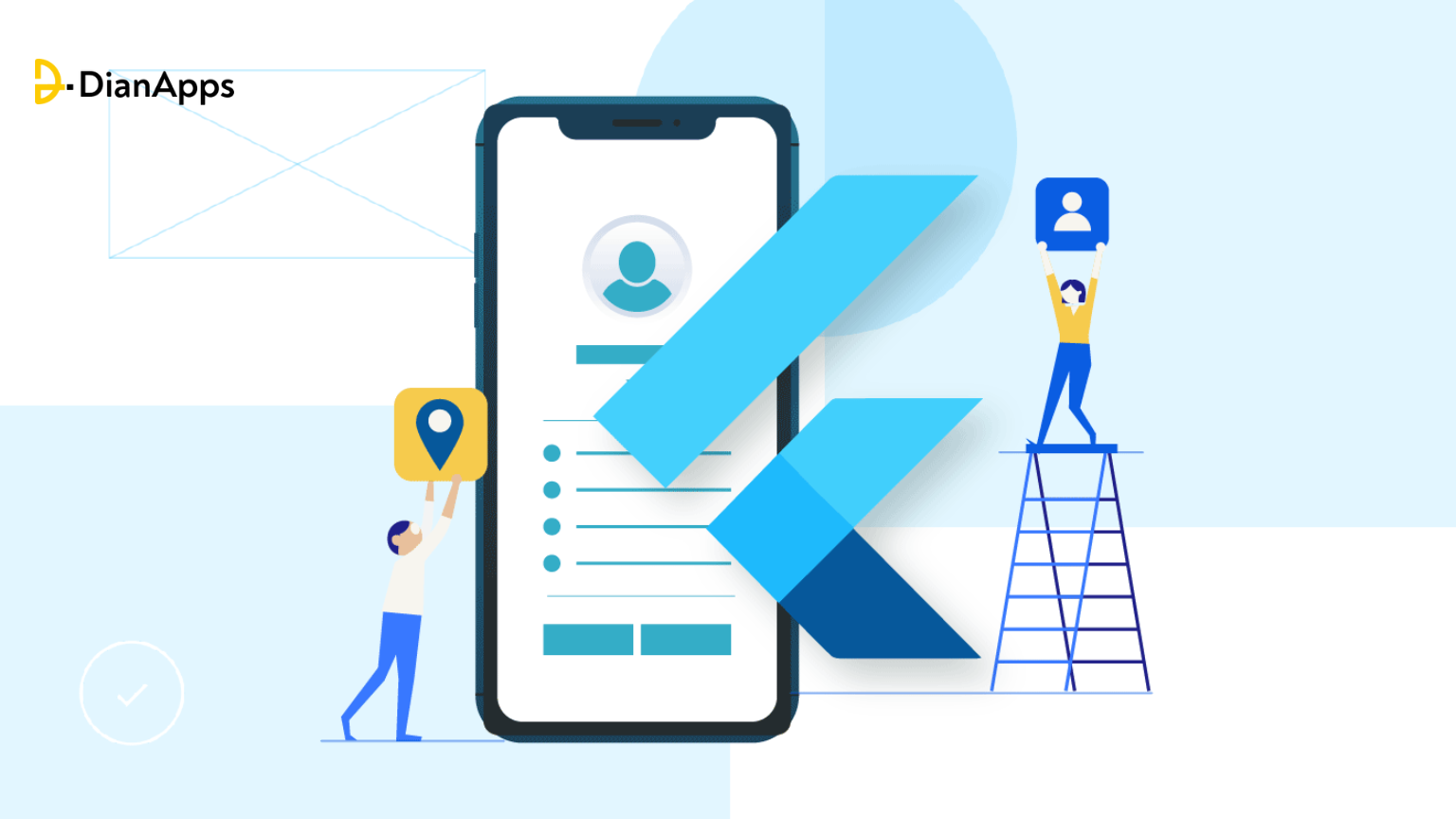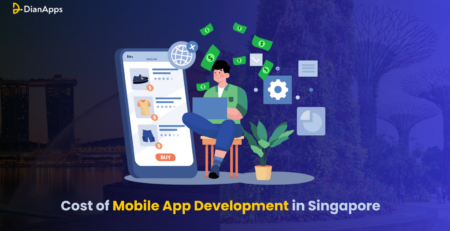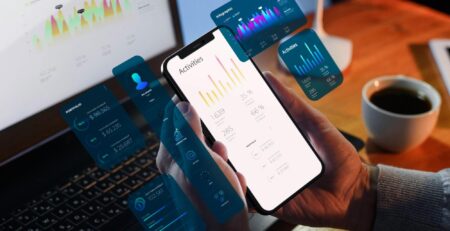Creating Stunning UI Designs with Flutter: Tips and Tricks from Experts
With its Flutter UI toolkit, Google has been showing off and experimenting ever since it was in the early stages. Global standards organizations and developers are increasingly choosing Flutter app development due to the insatiable curiosity to discover the framework’s actual potential and its insightfulness.
Why, however, Flutter?
With the help of the well-liked Flutter app development framework, developers can produce UI designs that are visually attractive for the iOS and Android operating systems. Flutter’s extensive collection of widgets, customizable themes, and sophisticated animation support are other factors in its appeal. These features give developers an adaptable and potent toolkit for creating stunning and responsive user interfaces.
We’ll be sharing some expert-selected tips and tricks in this blog to assist you in creating amazing user interfaces with Flutter app development.
Why use Flutter in UI Design?
Flutter in UI design is tremendously popular and one of the biggest reasons for its reach is Google’s support and trustable. Additionally, Flutter keeps releasing new features to enhance its functionality for developers.
And making use of its awesome UI toolkit features. Here are a few reasons why you should use Flutter in UI design.
Pixel perfect and size is no matter
Flutter enables pixel control in every display. Therefore, no matter which display size you have, Flutter will be responsive to it. Additionally, it will give designers a free-hand display view without any glitches or compromises.
Glitch-free user interface
Another reason to use Flutter in your UI is its 2D graphics engine with hardware acceleration that is built on top of Skia. With that, the flutter code is directly integrated into the native code implying no interpretation and no need for a virtual machine like JavaScript UI frameworks. This defines apps made with Flutter are glitch-free and having an intuitive user interface.
Look and feel the same with Material Design
Flutter uses its own Material Design which is elegant and beautiful. Whilst that, it gives the same buttons, widgets, and frames in both Android and iOS devices. The UI components on iOS and Android are designed differently, but Flutter will bring the same design to both platforms. While utilizing flutter-built apps, you receive the same experience across devices.
Because the Flutter UI kit contains the qualities listed above, developers have begun to utilize it extensively. Flutter’s engineers observed these and decided to expand Flutter’s capability to large displays as well.
Cross-platform compatibility:
With Flutter, developers can make apps that run on desktop, web, and mobile platforms—including iOS and Android. Are you curious about why Flutter is a wise pick for iOS development? Go here to read. Since developers don’t have to build unique apps for every platform, this can save them time and effort.
Quick development and hot-reloading:
Flutter has a quick development cycle that enables developers to use the hot-reloading capability to view changes in the user interface instantly. As a result, creating and testing various UI designs is made simpler and faster.
Widgets that can be customized:
Flutter has a large selection of widgets that can be quickly styled and grouped to provide distinctive user interface designs. This makes it possible for developers to design UIs that are aesthetically pleasing and platform-neutral.
Performance:
Even on less powerful devices, Flutter’s architecture is built to maximize speed, resulting in quick and fluid UI rendering.
Robust community and ecosystem:
Flutter boasts a burgeoning package and plugin ecosystem that can be leveraged to expand the framework’s capabilities, in addition to a robust and encouraging development community.
How to Implement any UI in Flutter? Tips and Tricks
Flutter is a popular and powerful open-source mobile app development framework that makes it easy to create high-performance, beautiful user interfaces. Flutter has a rich set of built-in widgets that can be customized and combined to create any UI design. In this article, we will discuss how to implement any UI in Flutter.
Select the appropriate widget.
A vast array of widgets from Flutter may be utilized to create any kind of user interface. Prior to beginning UI implementation, it is critical to select the appropriate widget for your purposes. To create a button, for instance, you may use the “FlatButton,” “RaisedButton,” or “IconButton” widgets. Similarly, you may create a text widget by using the “Text” widget. Examine the various widgets for a while; chances are you’ll find one that meets your needs.
Arrange the widgets.
The next step is to arrange your widgets once you have selected the appropriate ones. You may arrange your widgets in a flexible and responsive way with Flutter’s powerful layout technology. There are two types of layouts in Flutter: rows and columns. You may use rows and columns, respectively, to arrange your widgets laterally or diagonally.
Apply the Flutter Inspector.
You may analyze and debug your user interface (UI) with the help of the robust Flutter inspector. It offers comprehensive details on every widget, such as its size, position, and characteristics. Issues with layout, performance bottlenecks, and other issues that might impact your user interface can be found with the inspector.
Bonus Read: Top 12 tools that every flutter app developer should use in 2023!
Make your widgets unique.
Flutter widgets are highly adjustable, allowing you to customize both their appearance and behavior to suit your needs. For example, you may change the button’s color, add an icon to it, or change the text widget’s font. Customizing widgets is a vital part of building any user interface (UI) since it allows you to give your software a unique look and feel.
Employ animations
Illustrations may make the interface you use (UI) come to life and become more interesting. You can make slick, flowing animations with Flutter’s robust animation technology. Animations may be used to animate the attributes of your widgets, provide visual effects to your user interface, and create screen transitions.
Make use of third-party software
You may utilize the thriving third-party package ecosystem of Flutter to improve your user interface. These packages include extra tools, animations, and widgets to aid in the creation of more intricate user interface designs. The “Flutter Material Color Picker,” “Flutter SVG,” and “Flutter Camera” are a few well-liked tools for Flutter UI development.
Check the user interface.
Any software development process must include testing, and Flutter offers a number of tools to help you test your user interface. With the testing library included with the Flutter framework, you can create unit and integration tests for your application. These tests may be used to make sure your user interface functions as intended and to find any flaws or problems that might be affecting your application.
Enhance your user interface.
Developing a high-performance application requires optimizing your user interface. You may optimize your user interface (UI) in several ways, including code splitting, caching, and lazy loading. These methods can help your program utilize less memory and processing power, which can result in quicker load times and more seamless operation.
Make use of responsive design
Using responsive design, your user interface can adjust to various screen sizes and resolutions.The “MediaQuery” and “LayoutBuilder” components are only two of the resources that Flutter provides to make adaptive design implementation easier. With responsive design, you can make sure that your app looks great and works properly across all platforms.
Over To You
Choose a widget, write its code, construct the widget with other widgets, and discover what wonderful UI you can create with Flutter. But without a dedicated flutter developer, all your research and development will be vague. Why hire DianApps’ developers? Click to read.
One of the most important aspects of developing desktop, web, and mobile apps is UI implementation. With the help of the UI toolkit Flutter, you may develop cross-platform apps. UI development is made easy with Flutter’s abundance of widgets and declarative approach.
Continue to build UIs with Flutterby hiring a reliable Flutter app development company in the USA. That will become second nature to you as you practice. And you will be able to use Flutter to implement any UI.




